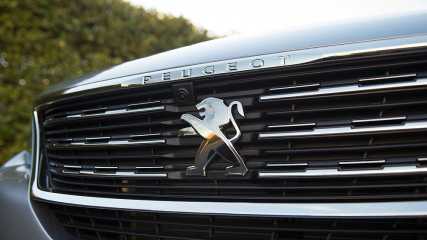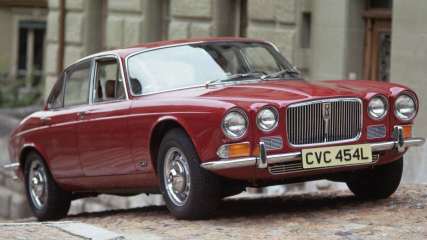Peugeot Advice
.jpg)
What Are The Most Fuel Efficient Cars in Australia
Read the article
By Tom White · 17 Feb 2025
The most economical car argument is still a valid one, despite the fact that oil prices have stabilised around the world.

Peugeot capped price servicing - cost, schedule & info
Read the article
By Matt Campbell · 11 Aug 2022
French manufacturer Peugeot may not have its own in-house local representation in Australia, but the company’s local distributor, Inchcape, has seen to it that customers are getting a decent deal.As such, there is a capped-price servicing plan for all Peugeot models, from the pint-sized 208 city hatchback to the family focused 5008 seven-seat SUV. It also covers models no longer on sale here, including the 4008 (a Mitsubishi ASX in make-up). The intervals for servicing differs somewhat between models, with some models due for maintenance every 12 months/15,000km, while others have slightly lengthier distance gaps (12 months/20,000km).As for servicing costs, the French brand hasn’t necessarily managed to get it down to where it should be - on average, Peugeot models are more expensive to maintain than pretty much any other brand, be it from Europe or elsewhere.The brand does back its models with a five-year/unlimited-kilometre warranty, though, which puts it in the mix among a lot of its mainstream contemporaries.See the table below for all the important details for Peugeot capped price servicing across each of the brand’s models sold in Australia.
.jpg)
Best new cars arriving in 2017
Read the article
By Peter Anderson · 05 Jul 2020
Is 2017 the year of the new car for your garage? It's pretty easy to work out what's available now, but here are the most exciting models that are yet to arrive in showrooms.

Kia Seltos vs Subaru Forester vs Suzuki Vitara vs Peugeot 2008 | The Cars Guides
Read the article
By CarsGuide team · 27 Apr 2020
CarsGuide readers Trisha and Karl are a mum and a dad in search of a new car, so they’ve asked our expert team of journalists to help them choose the right one for their little family of three.They’re currently driving an ageing Renault Megane and both think it might be time to switch to an SUV. But Trisha and Karl aren't sure which is the right SUV for them. That’s where The Cars Guides can help.Matt Campbell and Richard Berry are joined by James Cleary, Tom White and Peter Anderson who each nominate what they consider the perfect next car for Karl and Trisha’s family.Should it be a Kia Seltos, a Subaru Forester, Suzuki Vitara or even a Peugeot 2008?Watch as The Cars Guides go to extreme lengths to prove exactly why their choice is the right one.

Cheap good looking cars: 10 best looking affordable vehicles
Read the article
By Iain Kelly · 20 Sep 2019
Owning a car comes with a sense of pride, so people don’t generally deliberately go out and buy ugly vehicles.
.jpg)
Best new car deals for summer
Read the article
By Peter Anderson · 06 Jan 2017
It's January and you've just farewelled a massive year. Good job, time to finally kick back, enjoy the summer sun and realise you've forgotten to buy a new car. Just what you need, a tour of dealers.

How to tell just how old your new car is
Read the article
By Bill McKinnon · 27 May 2016
Sounds like a trick question? You're right. Like everything else in the car world, the definition of "new" is negotiable.If you think "new" applies to the shiny four-wheeled object you're about to sign up for, that it just rolled off the production line, hasn't been driven, is packed with state of the art tech and won't be superseded for a few years, you're probably wrong. I'll explain …BirthdaysGet a car's birthday wrong and it can cost you serious money. When a car leaves the factory, it carries a build plate, which identifies the month and year it was manufactured.When an imported car arrives in Australia it is also fitted with a compliance plate, which identifies the month and year it landed and cleared customs with the relevant approvals according to the Australian Design Rules.When you buy, register and insure a new car, its model year is determined by the compliance plate date.It's often the case that an imported car is built in the year before it arrives in Australia, so the build plate will identify the car as being a year older than the compliance plate.If you're buying a new car, your friendly local dealer will point to the compliance plate as evidence of its birthday.However at trade-in time they will also have a look at the build plate, and if it's from a year earlier, that's the year they will use in valuing the car, because one year older means it's worth less.In the early months of a new year, most importers and dealers are still holding compliance-plated stock from the previous year. You'll often see it advertised in January with a discount, for the same reason — it's now one year old.Always check the compliance plate and build plate dates. If either or both are stamped with last year's date, your new car isn't really new any more, so factor this into the deal.RegistrationA similar trap applies here. In the car business, everybody from the global supremo to the sales junior at the smallest dealer has to meet targets. If they don't, they soon get to spend more time with the family.So importers and dealers will sometimes register new cars late in the year to get them included in annual sales numbers, even though the cars haven't actually been sold to real people. These cars will then be sold as demonstrators, usually with a few kilometres on the clock and often at an attractive price. That's fine but the factory warranty starts ticking as soon as the car is registered, so if a demonstrator was registered six months before you bought it, six months' warranty has already expired. It's offered to you with the balance of the warranty.Factor this into the price, or hit the dealer for the full warranty coverage, in writing.Everything old is new againIn automotive engineering terms, a brand new model usually only comes along every five to 10 years. Brand new in this context means a car with new drivetrains (engine/transmission/software) and/or the platform, the base structure of a car that determines its dimensions, configuration and other fundamentals.It may seem contradictory but styling is rarely an accurate indicator of newness.Sheetmetal is merely cosmetic, so if a manufacturer wants to recycle an old model as a new one, the oldest and cheapest trick in the book is a "facelift." This usually runs to a restyled front end, a little nip and tuck at the rear, new lights at each end, different looking wheels and extra colours on the palette. They simply change the box, not the chocolates.An exception is the Audi A4, which cloaks major technical advances in a body that looks much like its predecessors.The main factors driving new model development include ever-tightening emissions standards, fuel efficiency and such driver assistance/semi-autonomous vehicle safety tech as automatic emergency braking and smartphone integration.If you're looking at a new car to buy, do some research on CarsGuide to see how its credentials here stack up against the rest of the class.Japanese and Korean makers usually follow a relatively conservative, low-risk engineering path for their higher volume, lower priced cars, with less frequent changes and updates throughout a model's life.German makers, in contrast, tend to turn over models and introduce engineering innovation at a faster rate than the rest of the market, because (in common with Apple) they take a technology-driven approach and charge premium prices to affluent customers.The downside for those customers is that their new German car is often superseded shortly after they bought it.The latest is never the greatest for long in the car business.New is betterNot necessarily. The maxim "Never buy an early example of a new model" still holds true. A new-from-the-wheels-up car will often have a few problems, in some cases serious ones that soon cause their owners to wish they could make "that new car feeling" just go away.Examples include 2004 Ford Territory, Holden's 2006 VE Commodore and Cruze, several Benzes from the noughties, including the C, E and M-Class, Jeep Grand Cherokee, Peugeot's 2001 307 and several Audi and Volkswagen models, notably those with the DSG/S Tronic transmissions, including Q5, Polo and MkV-VI Golf.Engineering development on a new model doesn't stop when it goes into production. By the time a car has been in production for a couple of years, the manufacturer usually will have fixed most of the bugs and made other improvements in response to owner feedback and what the competition is offering.Run in to a runoutGiven makers' continuing improvements, the best time to buy a new car is just before it's about to be superseded. It's been around for a while (usually five to 10 years), it's thoroughly sorted and "in runout" — industry code for get rid of it before the new model arrives — so you'll pick up a good deal.Hyundai's current deal on the i30 is a prime example. The brand spanking 2016 model is imminent. I haven't yet driven it but I don't care how good it is, because the runout deal of $19,990 drive-away with the six-speed automatic is an absolute bargain and about $7000 off full freight.It's always worth checking where the new car you're thinking of buying is in its life cycle. If it will be superseded within a year or two, its trade-in value will take an extra hit and it's probably worth waiting until runout time, when the savings will compensate for this.If it's about to be superseded by a car that's demonstrably better in the important areas, it might be worth waiting for the new model. But bear in mind that the majority of new models aren't 100 per cent, or even 50 per cent, new at all.
.jpg)
Top new car buys you may have overlooked
Read the article
By Craig Duff · 17 Jul 2015
Walk into a pet shop and there'll always be a pooch that's endearing but overlooked. The deterrent might be the price, or the markings or even the fact it's an exotic breed so it'll presumably take mo




